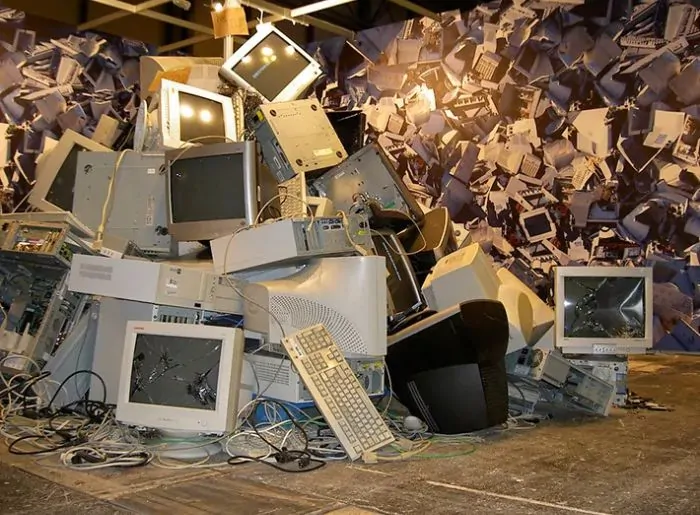In today’s fast-paced digital age, technology is advancing faster than ever. New smartphones, laptops, and smart devices are released every year, encouraging consumers to upgrade frequently. While this brings convenience and innovation into our lives, it also creates a rapidly growing environmental issue: E-Waste.
What is E-Waste?
E-Waste, or electronic waste, refers to discarded electronic devices and electrical equipment. This includes everything from old computers and televisions to smartphones, tablets, printers, and even household appliances like microwaves and refrigerators when they reach the end of their useful life. In simple terms, if it has a plug, battery, or circuit board and you throw it away, it’s e-waste.
Some examples of e-waste include:
- Broken or outdated mobile phones
- Old laptops and desktop computers
- Defunct televisions and monitors
- Outdated audio and video equipment
- Discarded printers, scanners, and copiers
- Dead batteries and chargers
- Small household appliances like toasters, coffee makers, and hair dryers
According to e-waste facts shared by the Global E-waste Statistics Partnership, the world generated an estimated 53.6 million metric tons of e-waste in 2019 — and this number is projected to reach 74.7 million metric tons by 2030. Shockingly, only 17.4% of this e-waste was formally collected and recycled.
Why is E-Waste a Problem?
The rapid increase in e-waste poses significant environmental and health risks. Here’s why e-waste is a problem:
1. Toxic Materials:
Many electronics contain hazardous substances like lead, mercury, cadmium, and flame retardants. When e-waste is dumped in landfills or incinerated, these toxins can leach into soil and groundwater, contaminating ecosystems and threatening human health.
2. Resource Waste:
Electronic devices contain valuable materials like gold, silver, copper, and rare earth metals. When not properly recycled, these resources are lost forever, increasing the need for more mining and extraction, which harms the environment further.
3. Informal Recycling Hazards:
In many developing countries, e-waste is often processed by informal workers who dismantle devices by hand, frequently without protective gear. This exposes them to dangerous chemicals and pollutants, endangering their health and local communities.
4. Growing Volume:
The lifespan of electronics keeps shrinking due to rapid innovation and planned obsolescence. Consumers are encouraged to upgrade to the latest model even if their current device is still functional. This cycle leads to mountains of waste.
E-Waste Management: Recycling and Disposal
Proper e-waste disposal and e-waste recycling are crucial parts of responsible e-waste management.
Modern Waste Management Solutions
Effective e-waste management solutions are vital for tackling the rising tide of discarded electronics. These solutions go beyond basic recycling — they include comprehensive systems for collection, safe dismantling, material recovery, and responsible disposal. Modern waste management solutions also encourage manufacturers to adopt circular economy practices, such as designing products that are easier to repair, refurbish, or recycle. By investing in advanced recycling technologies and building accessible collection networks, communities and governments can significantly reduce the environmental impact of e-waste and recover valuable resources that would otherwise end up in landfills.
E-Waste Recycling:
involves collecting discarded electronics and safely extracting valuable materials like metals, plastics, and glass for reuse. Effective recycling reduces the need for new raw materials and prevents hazardous substances from polluting the environment.
Proper E-Waste Disposal“
means ensuring that electronics are not simply thrown into regular trash bins. Instead, they should be taken to certified recycling centers, special collection drives, or manufacturer take-back programs.
Many countries and local governments have set up designated drop-off points and recycling facilities where people can safely dispose of old electronics. Some electronics retailers also offer free recycling or trade-in programs when you buy new devices.
How to Minimize E-Waste
While recycling is important, the best solution is to minimize e-waste in the first place. Here are some practical strategies for how to reduce e-waste at home, work, and in communities:
1. Extend the Life of Electronics
- Repair Instead of Replace: Many people discard devices at the first sign of trouble. Instead, consider repairing your gadgets. Replace broken screens, upgrade RAM or storage, or fix batteries.
- Use Protective Gear: Cases, screen protectors, and covers help prevent accidental damage, extending the lifespan of your devices.
- Handle with Care: Simple habits like keeping devices away from moisture or extreme temperatures can make them last longer.
2. Buy Quality Over Quantity
Opt for durable, high-quality electronics from reputable brands known for reliability and longevity. Cheap gadgets often break down faster, contributing to more waste.
3. Upgrade Smartly
- Avoid Unnecessary Upgrades: Just because a new version is out doesn’t mean you need it immediately. Use devices for as long as they remain functional and meet your needs.
- Buy Upgradable Devices: Some laptops, desktops, and modular phones allow you to upgrade components instead of replacing the entire device.
4. Donate or Sell Old Electronics
If your devices still work but you no longer need them, donate them to schools, charities, or people in need. Alternatively, sell them online. This gives electronics a second life and keeps them out of landfills.
5. Participate in Take-Back Programs
Many electronics manufacturers and retailers offer take-back or trade-in programs. These programs ensure your old devices are properly recycled or refurbished.
6. Choose Eco-Friendly Brands
Some tech companies design products with sustainability in mind. Look for brands that use recycled materials, offer longer warranties, or make devices easy to repair.
7. Recycle Responsibly
When you do need to dispose of electronics, use certified e-waste recycling facilities. Never throw e-waste in the regular trash. Many local governments organize e-waste collection drives to make recycling easier.
8. Educate and Advocate
Spread awareness about the e-waste problem. Educate friends, family, and your community on the importance of proper disposal and mindful consumption. Support policies and businesses that prioritize sustainable practices.
Final Thoughts
The problem of e-waste is not going away on its own. With technology playing an ever-greater role in our daily lives, it’s our collective responsibility to address the impact our gadgets have on the planet.
Proper e-waste management, responsible e-waste recycling, and conscious consumption are essential steps in tackling this growing challenge. By understanding what e-waste is, why it’s a problem, and how to minimize it, each of us can contribute to a cleaner, safer, and more sustainable world.
Next time you’re tempted by the latest tech upgrade, remember: the best device might be the one you already own.



